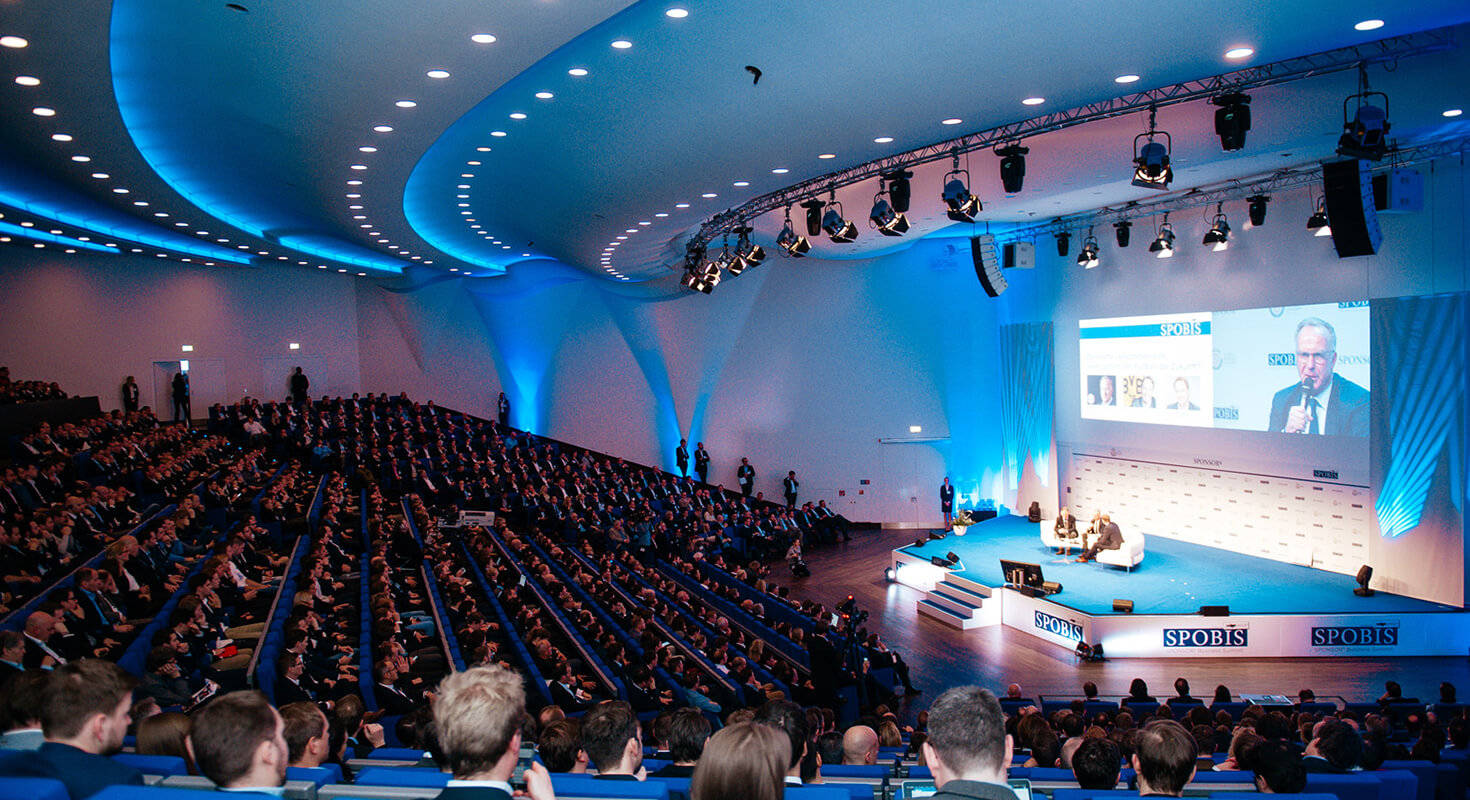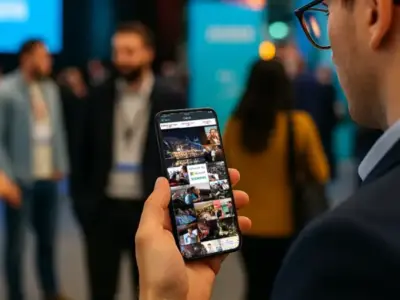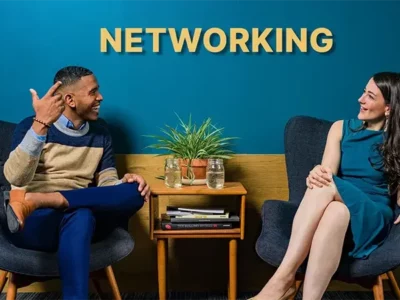
Technology, particularly social media and event apps, has broken down the traditional boundaries of networking and opened up new ways for us to make and maintain contacts. These digital tools allow us to network in a more targeted and efficient way than ever before. With the right strategies and an understanding of how these platforms work, anyone can maximize their networking potential and prepare for the future of digital networking.
Table of contents
- Digital vs. traditional networking
- How can social media help with networking?
- Veranstaltungs-Apps als Networking-Tool
- Practical tips for using event apps for better networking
- Networking strategies for events
- The future of networking and event apps
Digital vs. traditional networking
Digitalization has fundamentally changed networking. While traditional networking emphasizes face-to-face contact at trade fairs, conferences and other events, digital networking enables contacts to be established and maintained via the internet. Digital networking can take place via platforms such as LinkedIn, Xing or X (Twitter) and offers the opportunity to connect with professionals from all over the world, without geographical boundaries.
One of the main advantages of digital networking is its convenience. You can network anytime and anywhere without having to wait for an event. It also allows for a more targeted approach as you can filter people by industry, professional experience and interests. However, digital networking often lacks the personal touch that traditional methods convey through body language, voice and personal charisma.
How can social media help with networking?
Social media are powerful tools for networking. They allow users to showcase their professional profiles, connect with like-minded people and engage in professional discussions. Some concrete ways in which social media can support networking are as follows:
1. Expansion of the network
Social media makes it possible to connect with industry leaders, colleagues and potential employers that you might not otherwise meet.
2. Content sharing
By sharing relevant articles, blog posts or their own thoughts, users can demonstrate their expertise and stimulate discussions.
3. Groups and forums
Participating in topic-specific groups or forums can help you gain visibility in your own industry and establish yourself as a knowledgeable person.
4. Events und webinars
Social media provide information about upcoming events and webinars, which offer further opportunities for networking.
5. Direct communication
Functions such as direct messaging make it easy to start conversations and deepen relationships.
6. Personal branding
Social media are ideal platforms to build and maintain a personal brand by regularly posting content that reflects your values and expertise.
Technology has made networking more accessible and more diverse. It offers tools that, if used wisely, can complement and enhance traditional networking. It is important to find a balance between digital and traditional networking strategies to reap the benefits of both worlds.
Event Apps as a networking tool
It is important to understand event apps if you want to use them for effective networking. Especially nowadays, a well-planned event should also have an event app. Event apps are mobile applications specifically designed to enhance the experience of event attendees. They offer many functions, that are useful before, during and after an event. The core functions usually include:
-
-
- Event agenda
Participants can view the full program, select sessions and create their own personal schedule. - Networking features
Users can create profiles, get in touch with other participants, exchange messages and arrange meetings. - Interactive elements
Live surveys, Q&A sessions and feedback options encourage interaction and participation. - Informational resources
Access to event materials, speaker information and location maps.
- Event agenda
-
How event apps make networking easier
Event apps can facilitate networking on several levels:
Before the event
Participants can use the app to find out about other participants and make connections in advance.
During the event
The app makes it easier for participants to find like-minded people, arrange specific sessions and organize spontaneous meet-ups.
After the event
The app serves as a platform for maintaining newly established contacts and holding follow-up discussions.
Case studies: Successful networking with event apps
Example 1
At an international tech conference, one participant used the event app to set up a discussion group on a specific topic. The group later met in person and formed a mastermind group that remained active after the conference.
Example 2
A startup founder used the event app to specifically identify investors and arrange appointments for pitch meetings during the event. This led to several follow-up meetings and ultimately to a successful financing round.
Example 3
A freelancer used the networking functions of the event app to get in touch with potential clients. By setting tags and interests, he was able to filter relevant contacts and have more effective conversations that led to new projects.
Event apps are a powerful tool to optimize the networking experience. They provide structured and user-friendly ways to socialize, share information and deepen relationships, making them an indispensable part of modern events.
Practical tips for using event apps for better networking
Profile design in the event app: Create an appealing profile
A fully completed and appealing profile in the event app is the first step towards successful networking. Pay attention to the following things in the content:
-
- Profile picture
Choose a professional and friendly profile picture that shows you in a recognizable way. - Biography
Write a short but informative biography that includes your professional interests, areas of expertise and goals. You can also use your elevator pitch as a guide here - Contact information
Make sure your contact information is up to date and add links to your professional social media profiles or website. - Keywords
Use relevant keywords in your profile so that other participants can find you based on common interests or areas of expertise. Highlight certain words that are important to you, if possible.
- Profile picture
Active vs. passive networking in the app
There are two basic approaches to networking via event apps: active and passive networking. Active networking means that you take the initiative yourself. You browse the attendee lists to identify people who have similar professional interests or goals. Once you’ve found potential contacts, you use the app’s chat function to break the ice and open the conversation. It’s all about being proactive – send messages, ask questions and suggest face-to-face meetings or virtual meetings to deepen the relationship.
In contrast to this is passive networking. Here you make your own profile as informative and appealing as possible to encourage other participants to approach you. A well-completed profile with clear information about your specialist areas, interests and professional goals can act like a magnet. This also includes content with which you contribute in comments, channels or group chats. It attracts like-minded people who are looking for connections that will be of value to their own professional networks. With this method, it’s important to respond to incoming messages and invitations promptly to take advantage of opportunities as they arise.
Both strategies have their advantages and can be effective depending on your personality and the context of the event. While active networking often leads to direct results faster, passive networking can lead to deeper connections as the people you contact have already shown an interest in your profile. A combination of both approaches is ideal to maximize the potential of your network.
Networking strategies for events
Depending on the time of the event, you have a wide range of networking options to choose from.
Preparation: Setting goals and doing research
Start by setting clear goals: What do you want to achieve? Do you want to meet potential customers, partners or employers? Or are you looking to expand your knowledge and gain inspiration? Once you have defined your goals, do some research about the event and its participants. Who will be attending? Which companies will be represented? Are there specific people you want to talk to? Find out about their background and interests so you can have conversations of substance.
At the event: Finding and approaching conversation partners
It is important to be open and approachable during the event. Use breaks between program items to mingle with people. Look out for name badges or other identifying features that will help you to find the contacts you have researched in advance. Be bold and approach people directly, but always remain polite and respectful. A good conversation starter can be a question or a comment about a session you have just attended. Make sure that you not only speak, but also actively listen.
Follow-up: Maintaining and expanding contacts
After the event is before the next networking success. Sort through the business cards and notes you have collected and get in touch promptly. A personal message in which you refer to your conversation can work wonders. Keep in regular contact by sharing relevant articles or inviting them to another meeting. Remember that networking is a process. It’s not just about collecting contacts, but building and maintaining relationships.
Die Zukunft von Networking und Events Apps
With the evolution of event apps and the increasing importance of virtual and hybrid events, networking experiences are becoming more seamless, personalized and measurable. Artificial intelligence could be used, for example, to make networking recommendations based on your interests and professional goals. Augmented and virtual reality could offer new ways for interactive and immersive networking experiences.
In an ever-changing world, one thing remains constant: the importance of strong, authentic connections. By applying the strategies discussed here and remaining open to new technologies, you can ensure that your networking will be successful both today and in the future.





